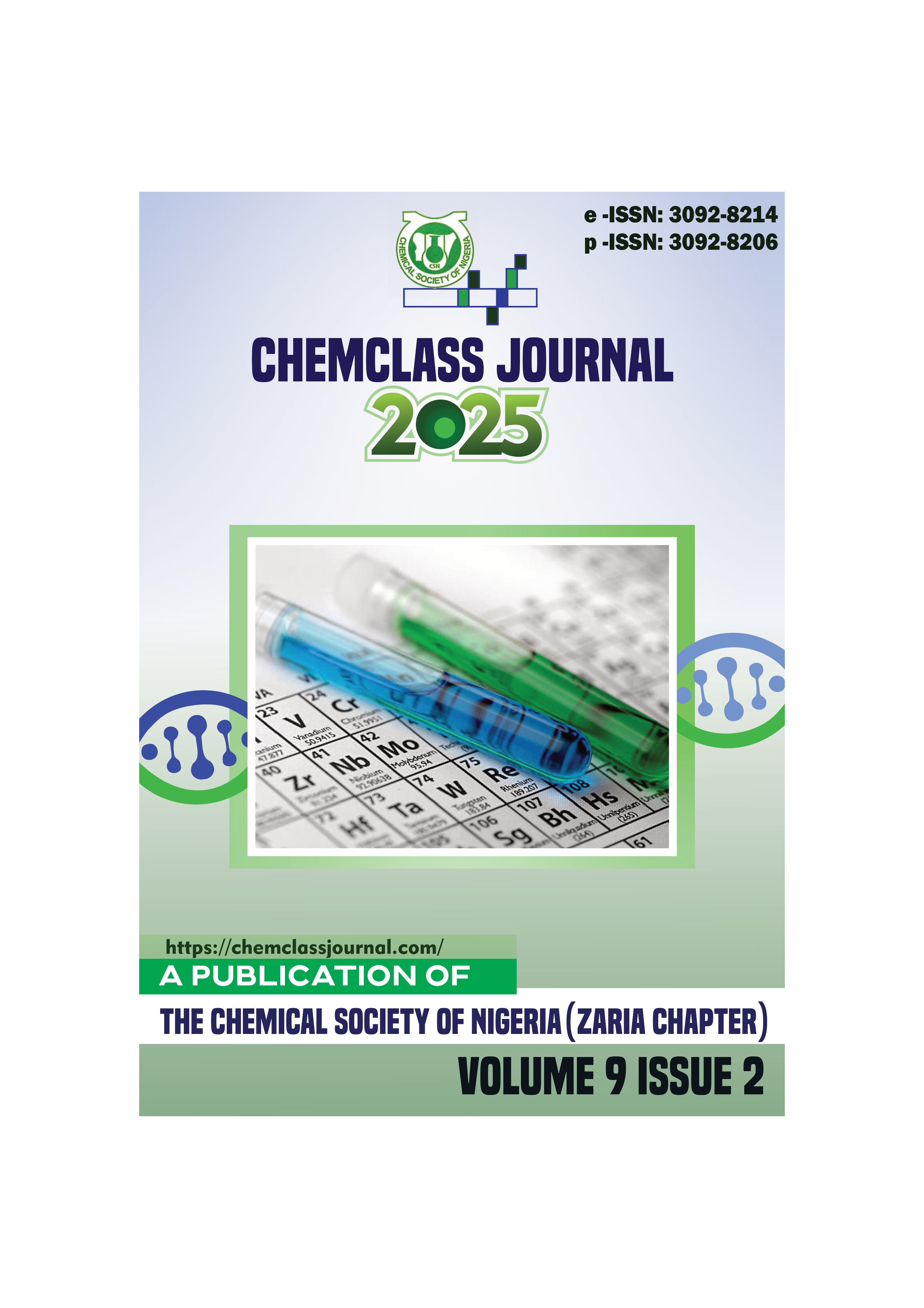Determination and Evaluation of the Heavy Metal Pollution in Obajana Industrial Belt, Central Nigeria
DOI:
https://doi.org/10.33003/chemclas-2025-0901/156Keywords:
Agricultural soils , FAAS , Heavy metals , Industrial belt , Cement, PollutionAbstract
The Obajana industrial belt is a predominantly mineral rich area where cement production with attendant
environmental pollution with heavy metals is occurring. The extent of heavy metal pollution on the
agricultural soil from this industrial area was carried out using Flame Atomic Absorption Spectrometric
technique. The results of heavy metals from the soil indicated that Cr and Ni have elevated concentrations
as the distance from the factory is increased with the values 0.52 – 6.06 mg/kg and 0.05 – 3.35 mg/kg
respectively. For Fe, Cu and Cd, the concentrations reduced as the distance from factory is increased with
the value ranging from 1.20 – 4.90 mg/kg, 0.24 – 0.74 mg/kg and 0.09 - 0.59 mg/kg respectively. The geo
accumulation index analysis indicated that the soil Cr, Cu, Cd, Mg and K are unpolluted to moderately
polluted, Fe and Na are moderately to strongly polluted. Zn and Ni were observed to be very strongly
polluted. This high content of Zn and Ni may plausibly come as a result of the industrial emissions from
the mineral rich soil. The soils around the Obajana industrial belt are not fit for agricultural purpose due to
the objectionable increase in the levels of some of the heavy metals.





 ChemClass Journal
ChemClass Journal
